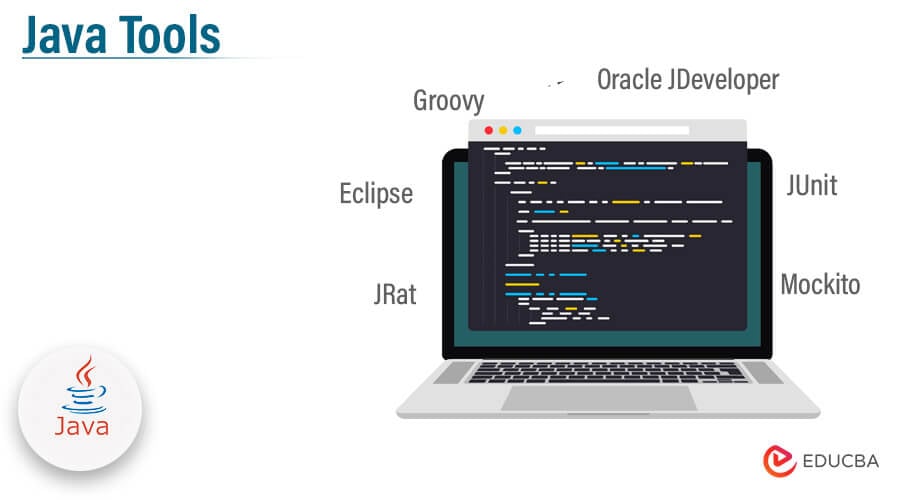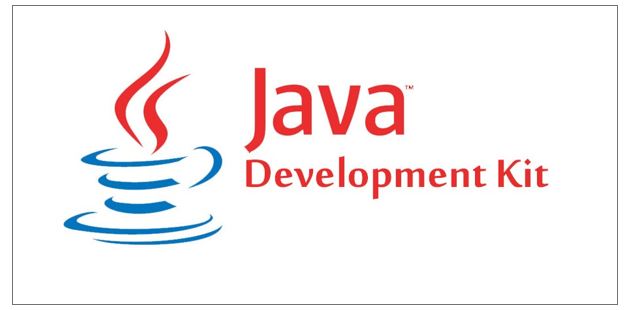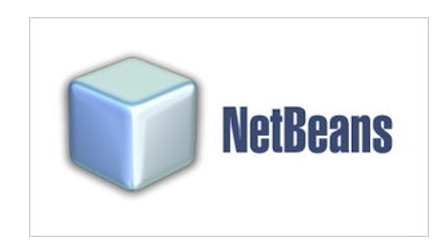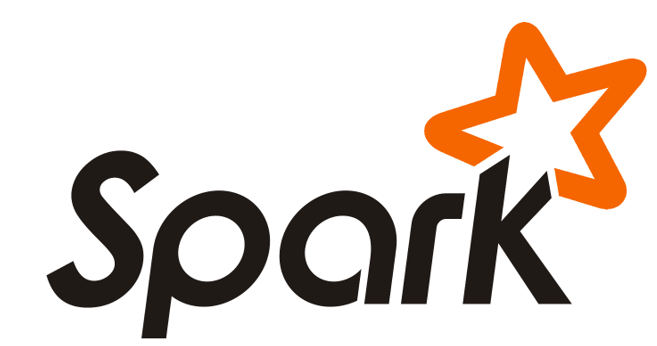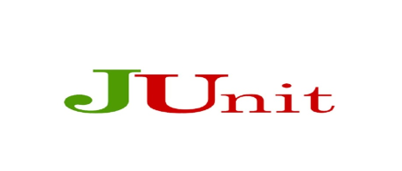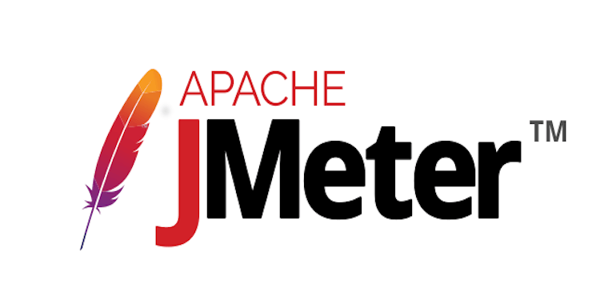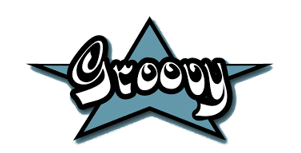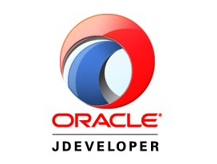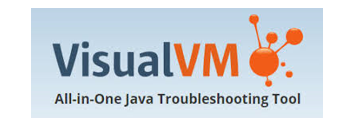Updated May 26, 2023
Overview of Java Tools
Java is an object-oriented programming language a developer uses to develop applications, websites, etc. It is a platform-independent language, i.e., it can run on any platform machine; there is no restriction. A portable feature of Java enables an application written in Java language to run on any platform. There are multiple Java Tools available that developers use to develop the application. Here in this article, we are going to discuss those tools.
List of Java Tools
Below are some of the tools of Java used by developers –
1. Java Development Kit
JDK is a tool for writing applications and Java Applets. The Java Development Kit includes the Runtime Environment for Java, Java, and Java APIs. It involves tools for Java application development, debugging, and tracking. Almost all new and experienced programmers can easily get started. The JDK involves a personal JVM and a few other resources to complete a Java application construction.
Features of the Java Development Kit (JDK):
- In the switch expression, there is a string.
- In Numeric Literals, there is an underscore between digits liberals.
- Provide support in one single catch block to manage several exceptions.
- In Generic object instantiation, there is an automatic type infusion.
2. NetBeans
NetBeans is an open-source Java tool to develop web, mobile, and desktop applications. NetBeans IDE was widely recognized as the official IDE for Java 8 version.
Features of NetBeans:
- Supports all the new Java technologies.
- It provides syntax, similar words, indexes, matching phrases, and automatic suggestions to avoid writing wrong syntax or coding.
- It can be installed on any machine which supports Java.
- NetBeans IDE supports many programming languages like Java, Python, JavaScript, HTML, groovy, c, c++, and PHP.
- It manages all the files and folders efficiently to understand the project’s structure easily.
- It provides a GUI interface, so coding becomes easy; ly creates code by dragging and dropping objects.
- It provides tools for finding bugs, i.e. errors and fixing them.
3. IntelliJ Idea
IntelliJ IDEA is a multifunctional IDE that focuses on the development of Java. It provides strong assistance for the growth of web, mobile, and hybrid applications. IntelliJ Idea is called ‘ the smartest Java IDE, ‘ which goes around.
Features of IntelliJ Idea:
- The code between all project databases and languages is analyzed.
- It lists the most appropriate symbols in the present context.
- Find double fragments of code on the fly.
- It can be used readily by users using static techniques or constants.
4. Spark
Spark is a robust web application development framework based on Java. It allows developers to build internet apps without boilerplate code writing. Spark runs on Hadoop, Apache Mesos, and Cubans, standalone, and in the cloud. Different data sources may be available. Spark provides more than 80 operators that make parallel applications simple to construct.
Features of Spark:
- Spark can support several languages.
- It includes interactive/declarative query instruments, information streaming, and machine learning.
- Active, gradual, and expanding community.
- Spark can not only work separately, but it can also work on Hadoop.
- In RAM, Server sparks store the information, enabling quick access and, in turn, speeding up analysis speeds.
5. Eclipse
Eclipse is an integrated Java-free open-source development framework. Eclipse offers much-needed help to complete code, refactor and check syntax. It provides new features, many models of tools, java testing techniques, and frameworks for growth. It also provides a variety of tool plugins for developing various Java apps called the Java Development Tools Project (JDT).
Features of Eclipse:
- JUnit integration is simple and seamless
- Provide total reports in detail
- You can also easily adapt it. Automated error reporting server in combination with the Ctrlflow.
- It allows developers to mix language support for C / C++ and PHP IDE, for example.
6. Gradle
Gradle is a Java tool for project automation. It builds on Apache Ant and Apache Maven features.
Features of Gradle:
- Better dependency modeling with the Java Library plugin decreases the volume of the classpath compilation.
- Gradle Wrapper allows Gradle to be performed on computers that are not assembled.
- Its intelligent classpath helps prevent the need to build when a library’s binary interface has not changed.
7. Java decompiler
Java Decompiler is a Java freeware tool reconstructing the CLASS Java source code. To make Java source code precise, you can decompile Java applets, JAR, and ZIP files. You can use a Java decompiler to view predefined Java class data such as HashMap, HashSet, ArrayList, etc.
Features of Java DeCompiler:
- javaDeCompiler tools support drag-and-drop options.
- In Java, decompiler source code shows the color coding,
- It works for almost all versions of Java,
8. JUnit
JUnit is a testing tool used for Java programming. It is open-source; it is free.
Features of JUnit:
- With the help of this tool, writing and running test scripts becomes easy
- It is Used to load the database with a specific set of data.
- It provides annotations to identify different types of test methods and test cases efficiently.
- It allows faster coding so that the quality and speed of development increase.
- It is used to Prepare other objects and sets of inputs.
9. Apache JMeter
The Apache JMeterTM ly open-source Java software, first created by the Apache Software Foundation’s Stefano Mazzocchi to load functional behavior testing and performance measurement. Originally, JMeter was used to test Web Applications or FTP. JMeter is currently used for functional testing, database server testing, etc.
Features of Apache JMeter:
- JMeter allows different server types to perform load and performance testing.
- This tool stores its test plans in XML format, allowing users to make the test plan using a text editor.
- The tool is also used to test the apps automatically and functionally.
- Plugins for data analysis and visualization allow extensibility and customization.
- Functions should provide dynamic input for information manipulation testing.
10. Groovy
Groovy is a powerful object-oriented language for the Java platform. The primary goal of this Groovy is to increase the production speed of developers. It runs on JVM, i.e., Java Virtual Machine.
Features of Groovy:
- It highlights syntax and errors automatically, like NetBeans, which helps avoid programming mistakes.
- It can integrate with Java or any third-party libraries
- Groovy supports AST transformation
- It supports static as well as dynamic typing.
- It automatically generates getters and setters.
11. Oracle JDeveloper
Oracle JDeveloper is an open-source Integrated development environment for Java. It allows a user to develop reliable services with the Java platform.
Features of Oracle JDeveloper:
- Oracle JDeveloper provides drag and drop options, and that is simply a dragging and dropping function to IDE to create an application; there is no need to type code manually.
- Used for developing web and mobile-based applications.
- It supports Database management.
12. JRat
The Java Runtime Analyse Toolkit is an open-source performance profiler for the Java platform, which is low overhead and straightforward to use.JRat controls the execution of an application and continues to measure efficiency. Use the JRat Desktop, a swing application, to view and analyze this information.
Features of JRat:
- Quickly we can transfer the file from one location to any other computer.
- JRat allows the remote View.
- For Redirection, JRat provides Support to Websites.
- JRat allows system files to be modified
- It helps users to manage their systems
- Taking screenshots helps the administrator record problems on the client’s desktop.
13. Mockito
Mockito is a Java Mocking Open Source and Testing Tool. Mockito is a famous Java mocking framework for open source. It helps developers write clean, excellently designed, and closely linked code. The tests are very readable, and they generate smooth check mistakes.
Features of Mockito:
- The Mockito tool is easy to use than any other tool.
- It provides a syntax that is easy to read. It also offers some necessary annotations to reduce the boilerplate code.
- It can be used to write behavioral style development tests with syntactic sugar.
14. Clover
Clover is a Java tool from Unit Test; it generates the code coverage reports. With Clover, you can close the code that can prove to be the most difficult and ensure that your test focuses on the code. It is available in Ant, Eclipse, and Maven as a plugin. It can also be used for the collection of integration test coverage information. Much of that is provided by continually updated and released fresh characteristics and improvements.
Features of Clover:
- This is an open-source tool and freely use in Java.
- Very simple to use due to the byte code on the fly.
- Inline annotation allows for emphasizing the coverage of statements visually.
- Test optimization makes running the test suite painless before check-in.
15. Ehcache
A standard cache that increases your performance downloads your database, and simplifies scalability is an open-source cache. The Java-based cache is most frequently used because it is flexible, well-proven, comprehensive, and integrated into other common libraries and frameworks. Scaling Ehcache from in-process caching to combined deployments in-process / out-of-process with terabyte caches.
Features of Ehcache:
- To use Ehcache, we need Java 8+
- Ehcache API is straightforward, and because of that, we can use it easily.
- It can be Scalable up to hundreds of caches.
- Allows integration with Javax cache boxes, Spring Caching and Hibernate
- Ehcache is committed to keeping its applications as lightweight as possible.
16. VisualVM
VisualVM is a visual tool that integrates JDK tools on the command line. It provides lightweight capabilities for profiling. We can use this in both production and development time.
Features of VisualVm:
- It shows Java processes both local and remote
- Performance and memory monitoring process
- Performance profile and use of memory
- You can read fundamental Java process data
17. FindBugs
Developers use the FindBugs open-source project for static analysis of Java bytecode to detect potential bugs. It allows the developer to access all kinds of bugs at an early growth stage.
Features of FindBugs:
- It can accurately identify bug patterns.
- It supports the Library of Guava and recognizes several prevalent ways of abuse.
- Support for identification of JSR-305 annotations detected.
Recommended Articles
This has been a guide to Java tools. Here we have discussed the basic concept and list of Java tools with features. You can also go through our other suggested articles to learn more –
